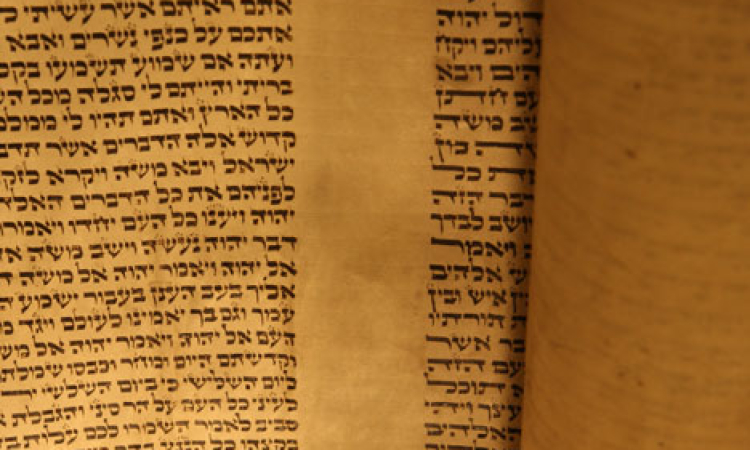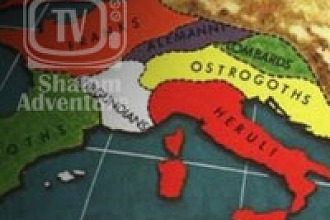Parasha for the Week: Terumah: Exodus 25:1 – 27:19
Haftarah for the Week: 1 Kings 5:12 - 6:13
Apostolic Writings: Revelation 15
Overview:
G-d commands Moshe to build a Mishkan (Sanctuary) and supplies him with detailed instructions. The Children of Israel are asked to contribute precious metals and stones, fabrics, skins, oil and spices.
Description of the Mishkan
1. in the Mishkan’s outer courtyard are an altar for the burnt offerings and a laver for washing.
2. The Tent of Meeting is divided by a curtain into two chambers.
The outer chamber is accessible only to the kohanim (priests), the descendants of Aharon. This contains the table of showbreads, the menorah, and the golden altar for incense.
- The innermost chamber, the Holy of Holies, may be entered only by the kohen gadol (high priest), and only once a year, on Yom Kippur. Here is the Ark that held the Ten Commandments inscribed on the two tablets of stone that G-d gave to the Jewish nation on Mount Sinai. All of the utensils and vessels, as well as the construction of the Mishkan (sanctuary) , are described in great detail.
BUILDING THE MISHKAN
This parasha called Terumah is part of a series of five Parashot, from now to the end of the book of Exodus. These parashot describe the instructions received from G-d and the process of building the sanctuary which is called in Hebrew Mishkan. It took about 2 years for Israel to build the Mishkan, it served them as a place of worship during their forty years in the wilderness, until they entered into the land of Israel, where according to the Jewish tradition they built a more permanent house of worship, even though the main furniture were still portable.
THE PRESENCE OF G-D
The first segment of the verse: “And let them make me a sanctuary (v;dqm) mikdash” (Exodus 25:8a) is a collective task on whose fulfillment the promised presence of the Shekhinah in Israel’s midst depends. The second segment “I may dwell in their midst” (Exodus 25:8b). According to Rabbi Hirsch: the Sanctuary is expressed by the Hebrew word v;dqm which means the totality of the task we are to fulfill towards G-d; and the tabernacle is expressed by the Hebrew word Nkv;m “Mishkan” which expresses the fulfillment of the promises made to us by G-d in return for our fulfilling that task. v;dqm signifies the consecration of all our lives, both public and private, to the fulfillment of G-d’s Word. Nkv;m signifies the promised presence of the Shekhinah, manifesting itself in the prosperity of our private and national life under His protection and by His blessing. The Tabernacle is to be Mikdash, the Place of Consecration, and the Mishkan the place of G-d’s closeness.
Haftara: 1Kings 5:12-6:13
The Sanctuary was a place of worship for Israel for about four hundred years before Solomon built the Temple in Jerusalem: “In the four hundred and eightieth year after the Israelites had come out of Egypt, in the fourth year of Solomon’s reign over Israel, in the month of Ziv, the second month, he began to build the temple of the L-rd.” (1 Kings 6:1).
G-d was satisfied and blessed Solomon. “The word of the L-rd came to Solomon: “As for this temple you are building, if you follow my decrees, carry out my regulations and keep all my commands and obey them, I will fulfill through you the promise I gave to David your father. And I will live among the Israelites and will not abandon my people Israel.” (1 Kings 6:11-13).
The spot on which the temple was built had long been regarded as a consecrated place. It was here that Abraham, the father of the faithful, had revealed his willingness to sacrifice his only son in obe-dience to the command of the L-rd. Here G-d had renewed with Abraham the covenant of blessing, which included the glorious Messianic promise to the human race of deliverance through the sacrifice of the Son of the Most High. “I swear by myself, declares the L-rd, that because you have done this and have not withheld your son, your only son, I will surely bless you and make your descendants as numerous as the stars in the sky and as the sand on the seashore. Your descendants will take possession of the cities of their enemies, and through your offspring all nations on earth will be blessed, because you have obeyed me.” (Genesis 22:16-18). Here it was that when David offered burnt offerings and peace offerings to stay the avenging sword of the destroying angel, G-d had answered him by fire from heaven (see 1 Chronicles 21). And now once more the worshipers of Jehovah were here to meet their G-d and renew their vows of allegiance to Him. (PK37).
Apostolic Writings: Revelation 15
G-d wants to dwell among his people (Exodus 25:8), and asks Moses to make a sanctuary. The book of Exodus uses about 15 chapters to describe the sanctuary in detail to be sure that this sanctuary would be made according to G-d’s will. G-d goes even further, He showed a model to Moses: “Make this tabernacle and all its furnishings exactly like the pattern I will show you.” (Exodus 25:9). What is this pattern? In the Talmud, there is an idea that the earthly sanctuary or temple correspond to the heavenly Temple where Michael is officiating. Here is the text of the Talmud “[In Heaven] the Temple and the Altar are built, and Michael, the great Prince, stands and offers up there on an offering, for it is said: I have surely built Thee a house of habitation, a place for Thee to dwell in forever. And whence do we derive that it is called heaven? For it is written: Look down from heaven, and see, even from Thy holy and glorious habitation.” (Chagiga 12b). Let’ remember that the name Michael, is another name of G-d himself, this name means Mi (who is) Ka (like) El (G-d) Michael means, the one “who is like G d”
This heavenly sanctuary is built forever. It means that G-d has showed to Moses the true Sanctuary, the one which has not been build by human hands, which is in heaven. G-d gave all instructions to Moses because the sanctuary on earth should be the exact reproduction of the sanctuary in heaven.
One of the best biblical book that speaks about this heavenly Temple is the book of Revelation or in Hebrew Hitgalut Yeshua. This book written by the talmid (dis-ciple) Yochanan (John) tells us prophetically the history of the world between the first coming of the Mashiach and his second coming. Thus, in the book of Hitgalut we have several visions of what happens in the heavenly Temple while the history of humanity is going on. Looking at the structure of this book we discover that there are three parts: Chapters 1 to 11 are the historical description of the world. Chapters 12 to 14 are the central part of the book, which describe the great conflict between Good and Evil, between Satan, the enemy of G-d and G-d’s people. And from chapters 15 to 22 it is the eschatological description of the history of G-d’s people, and the victory of God, the Messiah and His people upon Evil and Satan. The chapter 15, therefore, reveals what will happen just at the end of time. In the verse 5 Yochanan looked at the heaven and received a vision of the heavenly temple. “After this I looked, and the sanctuary of the tent of witness in heaven was opened,” (Revelation 15:5). What did he see? The ministering angels where working, The Talmudic tractate Chagiga 12b describes these ministering angels in this way: “[heaven] in which there are companies of Ministering Angels, who utter [divine] song by night, and are silent by day for the sake of Israel’s glory, for it is said: By day the Lord doth command His loving kindness, and in the night His song is with me.” They are 7 angels who protect G-d’s people on earth, we see these angels as protecting the 7 churches of Revelation 2 and 3. At the end 7 angels are sent on earth to pour the last 7 plagues, not only to punish the evildoers, but in parallel with the ten plagues of Egypt to protect G-d’s people. The fact that Yochanan has seen the Kadosh Hakdoshim opens in heaven is a clear indication that we are in the period of Yom Kippur, the last period of human history, the only day the Most Holy place is opened and the Kohen Gadol (Michael) officiates in it. The text continues: “And the temple was filled with smoke from the glory of G-d and from his power, and no one could enter the temple” (Revelation 15:8). On Yom Kippur the Cohen Gadol (high priest) enters the kadosh hakdoshim and has to put incense “He is to put the incense on the fire before the LORD, and the smoke of the incense will conceal the atonement cover above the Testimony, so that he will not die” (Leviticus 16:13).
Our lesson: if we want to understand the symbolism of the sanctuary built in the desert, If we want to understand the work of the Messiah, called also Michael, it is important to study the book of Hitgalut or Revelation and to discover how the plan of salvation has been revealed progressively in the entire Bible, and resumed in the book “revealed” to Yochanan, the last book of the Apostolic Writings. Revelation.








